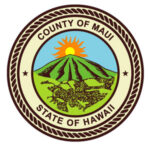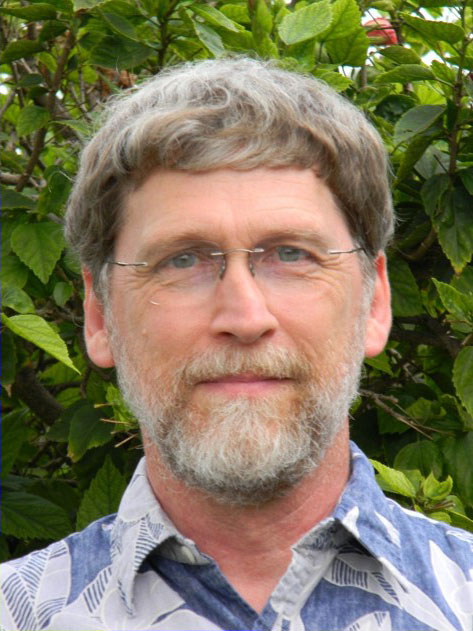
Jun 6, 2018 | Education

Dr. Paul Schumacher, Principal Investigator in Astrodynamics for Space Situational Awareness, Air Force Research Laboratory in Maui, recently gave a talk at the Institute for Astronomy in Pukalani, about the future of the satellite catalog. In recent years, the increasing numbers of objects in space has made the job of monitoring them more challenging—and more essential. “Many persons do not know that the U.S. military carries on an extensive world-wide satellite tracking operation to maintain a complete inventory, or catalog, of all known man-made objects in orbit around the Earth,” Schumacher explained. “Besides its military applications, the satellite catalog serves a variety of commercial, civil and even diplomatic functions. At present, more than 20,000 objects are being tracked routinely.”
The launch of Sputnik in 1957 marked the beginning of the Space Age. It also marked the beginning of a space race that brought a remarkable rate of rocket launches. “This created a host of strategic challenges, including the need for space surveillance,” Schumacher noted. “These needs led to the establishment of a mission to maintain a catalog of all Earth-orbiting objects, active payloads, rocket bodies, and debris, along with detailed information about trajectory and point of origin. Tracking space objects promotes space flight safety, protection of the space environment and the peaceful use of space worldwide. We reduce the risk of collision by sharing information with Governmental and commercial satellite operators, U.S. allies and others.”
The growth of the satellite catalog will certainly trigger a greater number of collision-risk alerts. Proper response to these alerts will require greater confidence in predictions along with better decision-making. Certainly, the space pioneers never envisioned that the vast majority of orbiting objects would be debris, nor would they have envisioned that alerting satellite operators about potential collisions would be a full-time job. “Nevertheless, this is the environment in which satellites currently operate,” Schumacher concluded. “A robust catalog and space surveillance tracking network are the cornerstones for ensuring a safe operational environment in space.”
The future satellite catalog is a topic that Dr. Schumacher and others often discuss at MEDB’s annual Advanced Maui Optical and Space Surveillance Technologies Conference. Satellites are essential to the technology we use in our everyday lives.
Sandy Ryan, Maui Economic Development Board Program and Conference Director
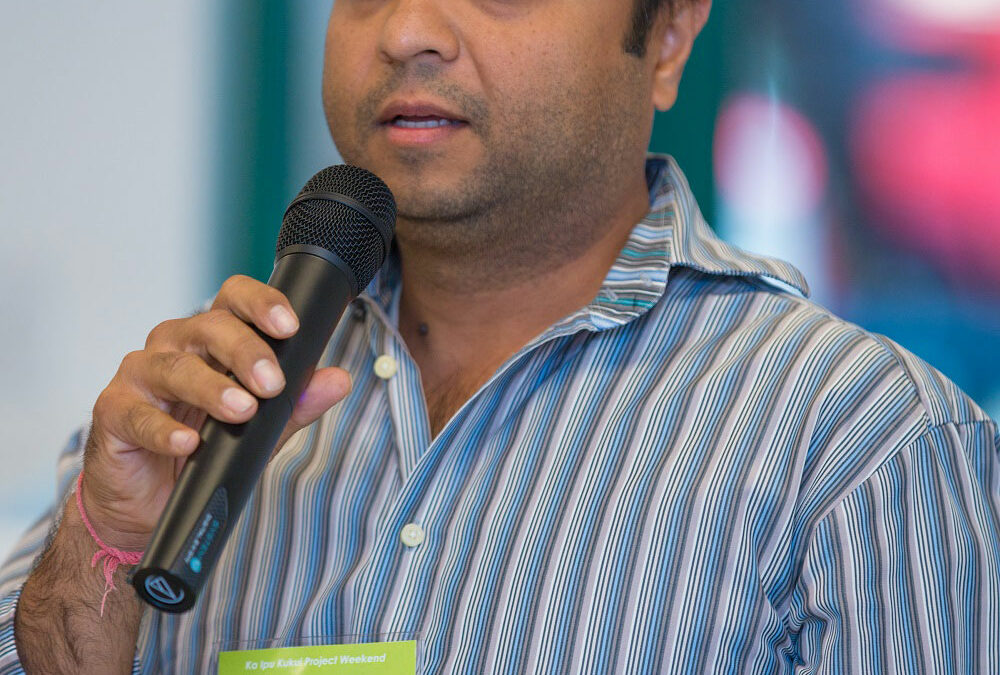
May 30, 2018 | Community, Education
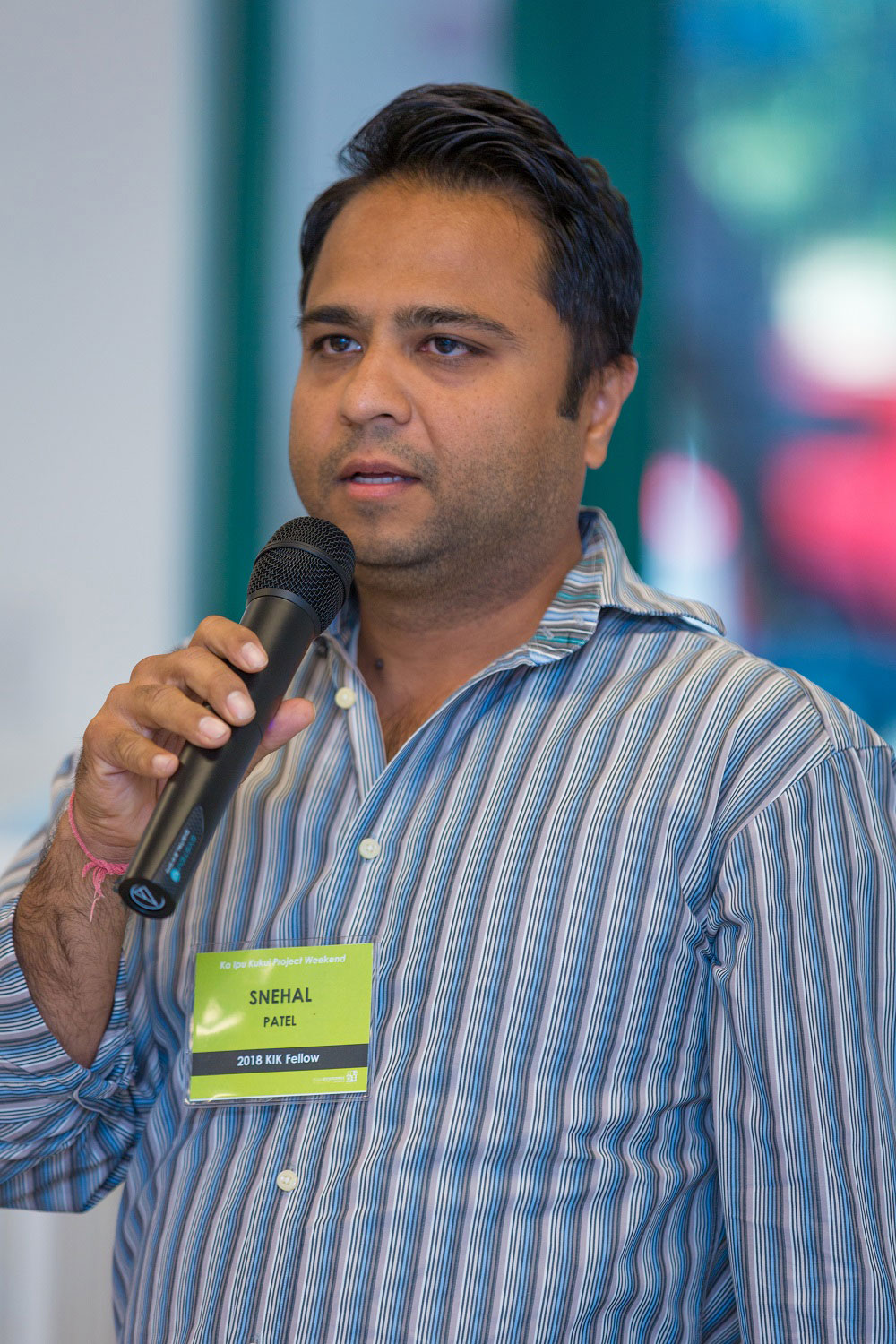
Founded on the values and priorities for Maui County’s future as articulated by Maui County’s residents through the Decisions Maui and Focus Maui Nui visioning processes, Ka Ipu Kukui Fellows is a year-long program dedicated to preparing community-nominated young leaders for the unique challenges and opportunities in Maui County. To date, over 100 accomplished professionals have graduated from the program. The current Fellows are a diverse cross-section of residents drawn from business, government, academia, and nonprofit organizations. Each month, the program offers halawai (meetings) focused on in-depth introductions to Maui County’s infrastructure and array of community leaders coupled with workshops to expand leadership skills.
Last December, Maui Economic Development Board (MEDB) hosted Project Weekend, an intense, team-based experience in which the Fellows go hands-on to create a community project. “MEDB was thrilled to guide the Fellows as they navigated the many layers of project development. It was fun to see the concepts unfold as the Fellows gained a first-hand understanding of what it takes to turn their idea into a viable community-based project,” shared Amber Hardwick, Ka Ipu Kukui alumna and MEDB’s lead on Project Weekend.
“What I went through was so valuable because it allowed me to realize that even though I have these fears going into it, none of that came about because we had such a great team that we just persevered together and created something that was even more special than I originally thought we could do,” said Snehal Patel who came up with the idea for the winning project called ‘We The People’. “Moving forward we are going to see if we can proceed with our project as a pilot program.”
“I enjoyed the collaboration,” said Sayble Bissen. “We got to learn a lot about how our co-worker Fellows think and how they see Maui as a whole and what can be done to help.” Discussing the future of her team’s project called Literacy for Financial Education (L.I.F.E), Sayble added “Our plan is to hopefully to follow through with our project – I am pretty positive that it can happen.”
As this year’s cohort celebrates their May graduation, Ka Ipu Kukui is accepting applications for the 2018-19 program. Learn more at http://www.kikfellows.org/
I think that we all have such great ideas, and Project Weekend helped us to execute that into a real live MVP (Minimum Viable Project), which I never knew about before going through this process.
Snehal Patel
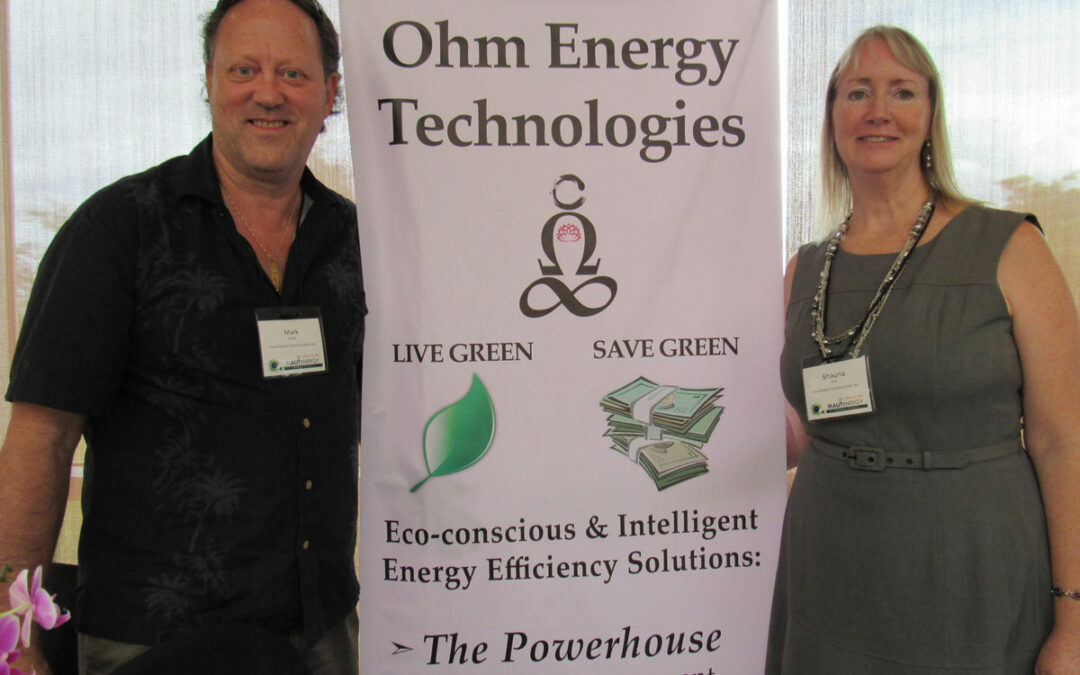
May 23, 2018 | Environment, Sustainability
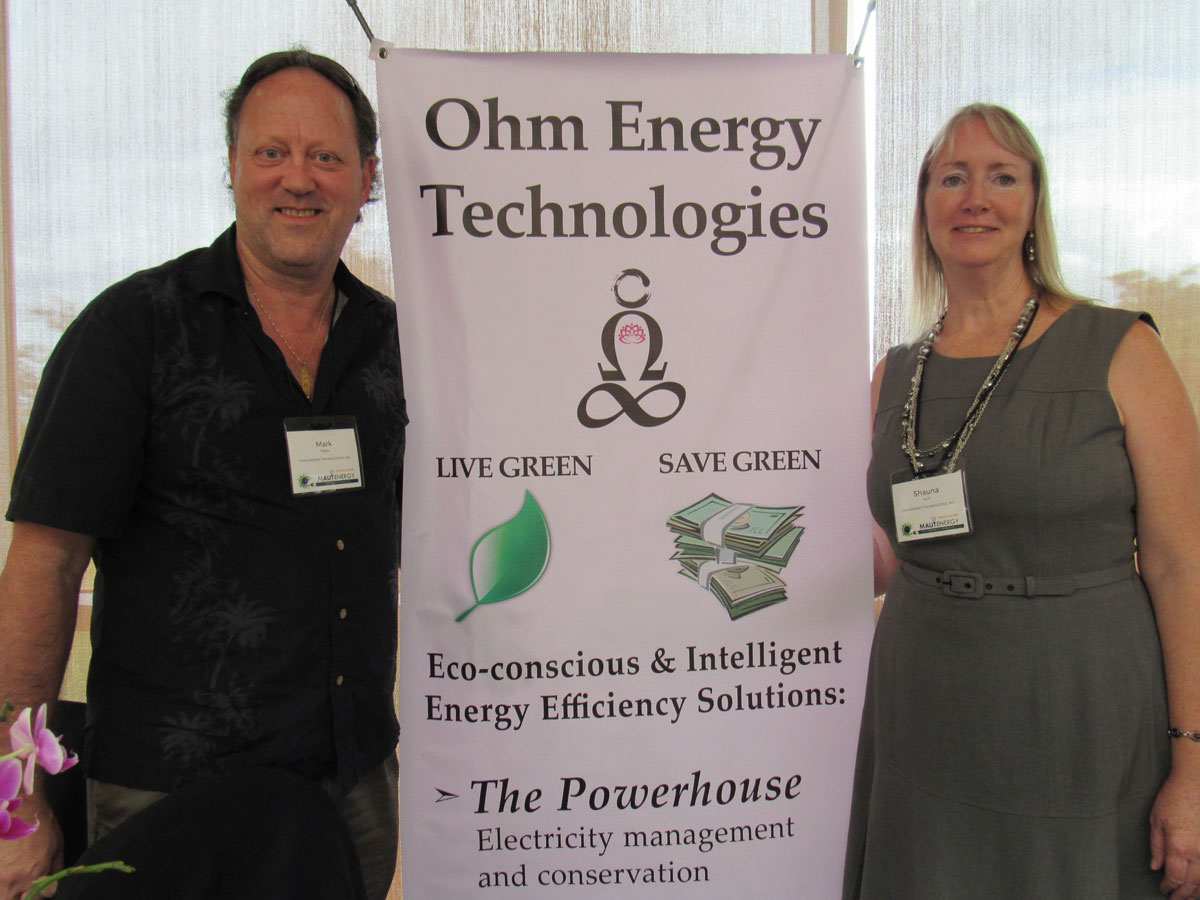
Mark Ware and Shauna Ault of Ohm Energy Technologies, Inc., exhibitors at the 2018 Maui Energy Conference, provide the technical acumen and business management for their family-run company. “Maui called us several years ago, prompting us to create a business that would serve the Hawaii community,” said Shauna Ault. “In 2016, Ohm Energy Technologies relocated from Idaho to Hawaii, to further serve a market experiencing high electricity costs. We are making significant impacts in reducing the consumption of electricity, thus reducing the amount of petroleum fuels burned, as well as saving our customers a significant amount of money on their electricity costs. Hawaii has an aggressive energy efficiency promotion policy, with targets of 100 percent renewable sources of generation by the year 2045. Currently, however, Hawaii still generates approximately 60 percent of its electricity by burning petroleum-based fuels.”
Ohm was established in 2014 to facilitate sales and installation of energy efficiency equipment in a variety of markets. Their primary product, The Powerhouse, was developed by an electrician as a prototype in 2002. It was so successful that it was quickly scaled up to small commercial application. Demand from larger facilities followed. Currently designed for commercial and industrial installations, The Powerhouse has reduced electricity bills by 10, 20, and even 30+ percent, depending on existing efficiency and types of equipment.
“In 2017, Ohm collaborated with manufacturers in California and Maine to develop the next generation of Powerhouse technology: a variable-capacitance system that dynamically adjusts to electricity demand, and a digital internet-accessible monitoring system for rapid access to data and control,” Ault explained. “These systems are now installed in an expanded market on Oahu and Maui, maximizing kilowatt reductions while continuing to provide all other benefits of The Powerhouse. Additional technologies we can implement include state-of-the-art LED lighting for commercial and municipal settings, solar LED street lamps, variable-frequency drives, and harmonic distortion control equipment. With this portfolio of energy efficiency solutions, Ohm Energy Technologies is well positioned to solve many of our energy concerns today, and into the future.”
Hawaii has been our strongest market to date; however, The Powerhouse has been installed in over 700 facilities in the U.S. mainland and Canada.
Shauna Ault, Ohm Energy Technologies, Inc.
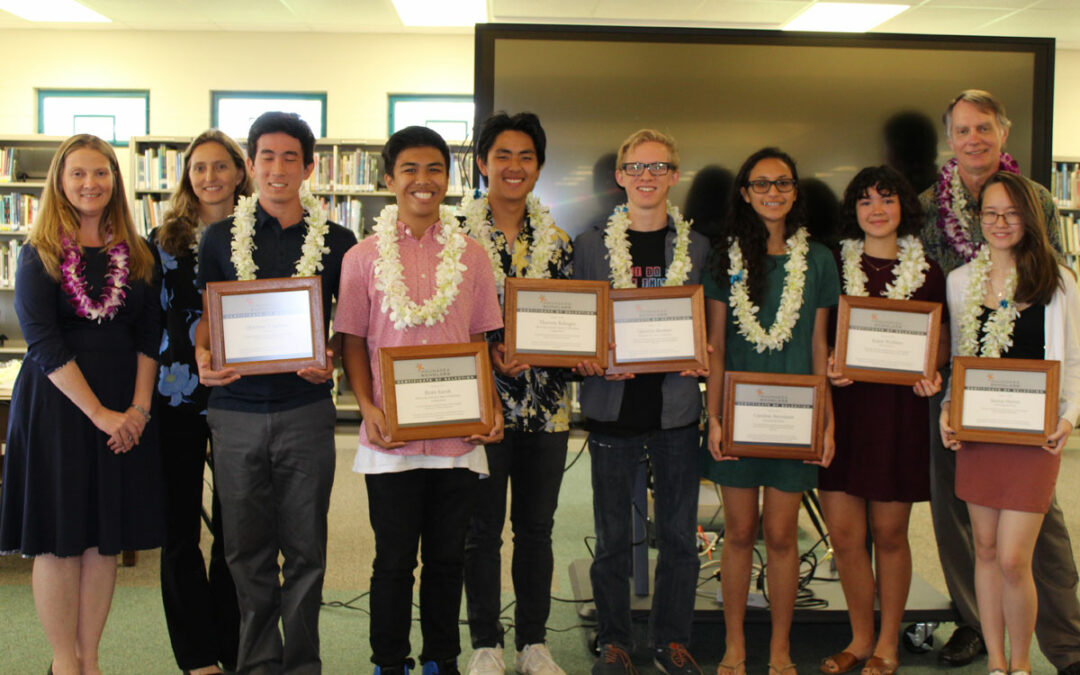
May 16, 2018 | Education, Innovation, Stemworks
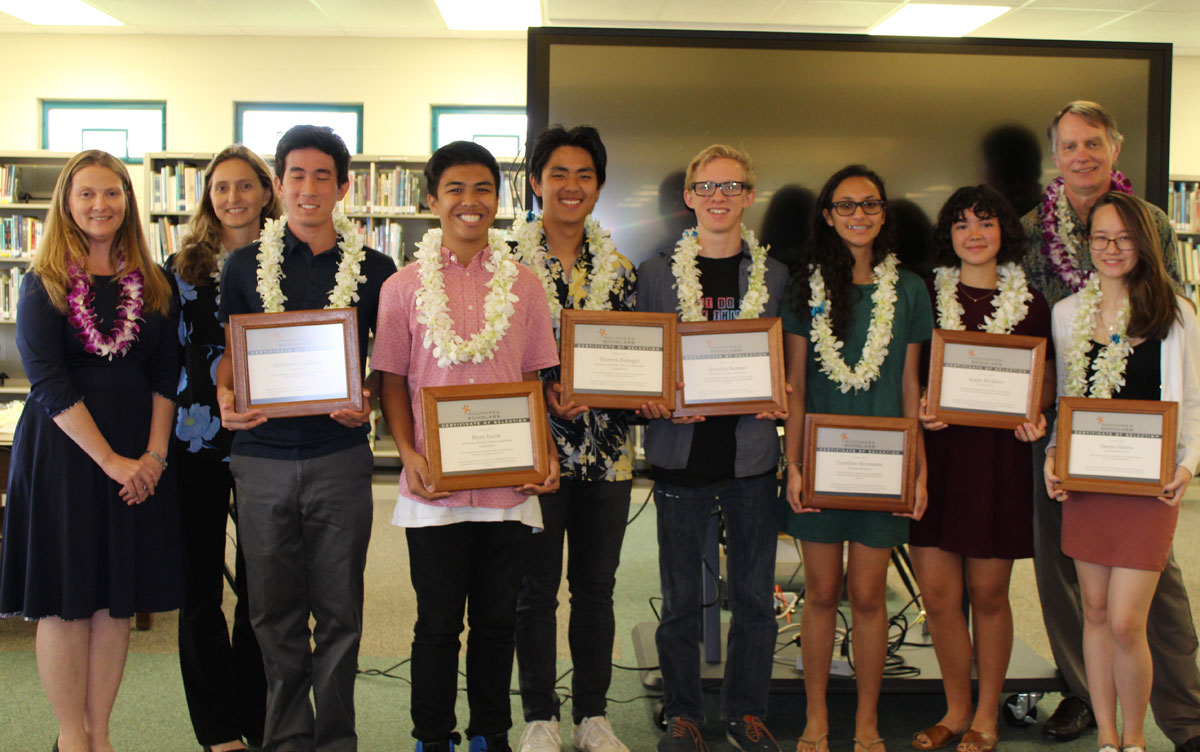
The Maunakea Scholars program, launched in 2015, created an official partnership between the Hawai’i State Department of Education (DOE), the University of Hawai’i, and Maunakea Observatories. Designed to bring Hawai’i’s high school students into one of the world’s most advanced observatory communities, the program’s third group of student astronomers are working with 10 participating international telescopes. Contributing to an innovative STEM (science, technology, engineering, mathematics) curriculum, the Maunakea Scholars provide amazing opportunities to the next generation.
The program pairs a professional astronomy mentor with students in each participating school to coach them through the process of interpreting astronomy data and crafting an original research application. The proposals are submitted to a time-allocation community for consideration, and projects are awarded highly valuable time on participating telescopes, based on the viability of the proposals.
“King Kekaulike is the first Maui school to participate in the Maunakea Scholars program,” said Emily Haines-Swatek, King Kekaulike High School MEDB STEMworks™ AFTERschool teacher. “STEMworks™ students submitted proposals to receive telescope time to conduct real research on an astronomical study of their choice. The Maunakea Scholars program partners with schools to provide observation time and summit tours. Twenty-two King Kekaulike students submitted proposals and seven students were granted telescope time during an awards ceremony on February 14th.” The King Kekaulike Maunakea Scholars and their projects are: Quinton Uradomo on Dark Matter; Janine Harris on Cepheid Magnitude Periods; Quentin Beamer on White Dwarf Formation Temperatures; Ryan Siarot and Thorren Rebiguo on Observing Asteroid Colors to Determine Composition; and Caroline Stevenson and Kayla Wholers on Deep into the Storm. The latter was awarded time on two telescopes, Las Cumbres and Canada-France-Hawai’i Telescope (CFHT).
Haines-Swatek became involved with the Maunakea Scholars after meeting with DOE and CFHT representatives at the 2017 Hawaii STEM Conference. “Because of the proximity to the Institute for Astronomy and the STEMworks™ electives taught at King Kekaulike, we make a perfect fit for the program,” she said. “The project stretched my student’s understanding of astronomy and pushed them to dream of something much larger than themselves. They are looking forward to conducting their research!”
Throughout the year, the Maunakea Scholars program supports each classroom with educational resources, including an integrated indigenous Hawaiian perspective on modern science education, led by ‘Imiloa Astronomy Center of Hawai’i.
Emily Haines-Swatek, King Kekaulike High School, MEDB STEMworks™ AFTERschool Teacher

May 9, 2018 | Community
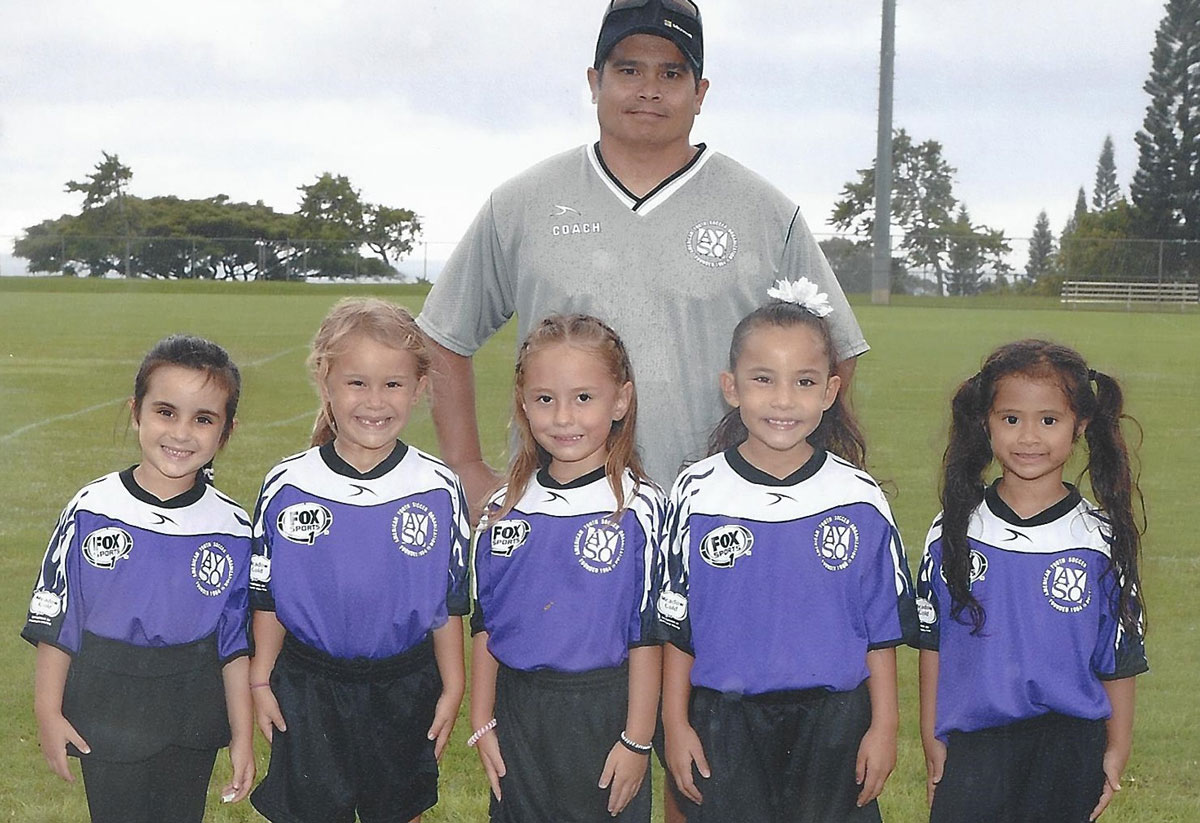
The world of American Youth Soccer Organization (AYSO), celebrated 53 years of soccer in 2017. Today, AYSO is a successful national and international organization, and is thriving in Hawaii. “The league is committed to the safe development and nurturing of all children,” said Francis Quitazol, Upcountry Maui AYSO soccer coach. “Our main goal is to develop and provide a positive experience for all keiki, promote fitness, teamwork, and the spirit of competition. As coach for AYSO girls, U6 (five and six years old), Quitazol found it very rewarding to watch the girls improve week after week of practice. “My coaching approach for these young girls was to keep it very simple and teach them the basic rules of the game,” he said. “One thing I enjoyed teaching them was the mental aspect of the game. I did this by asking each one of them before the game to show me their game face. At first, they thought a game face is supposed to be an angry expression, but I told them that it should be more of a reflection of their attitude as they prepare to compete. I explained to them that their game faces should convey both confidence and focus. My hope is that in the future they will take their game faces into a final exam or a big job interview and compete harder than they ever did on the soccer field.”
“We love being a soccer family!” said the Felicianos from Makawao. “AYSO’s mission works! They develop and deliver quality youth soccer programs. The season promoted a fun family environment based on AYSO philosophies of good sportsmanship, teamwork, positive coaching, and player development. We have seen the positive effect that soccer has had on our daughter, Moorea. She is learning the importance of exercise, plus all the benefits listed above. We encourage all parents to learn more about joining their local AYSO league, get the children playing, and the whole family out to the games.”
I didn’t even know how to pass or kick the ball when I first started. Now I play with my teammates and when we work together we can make a goal!
Moorea Winter Feliciano, Makawao School, Kindergarten
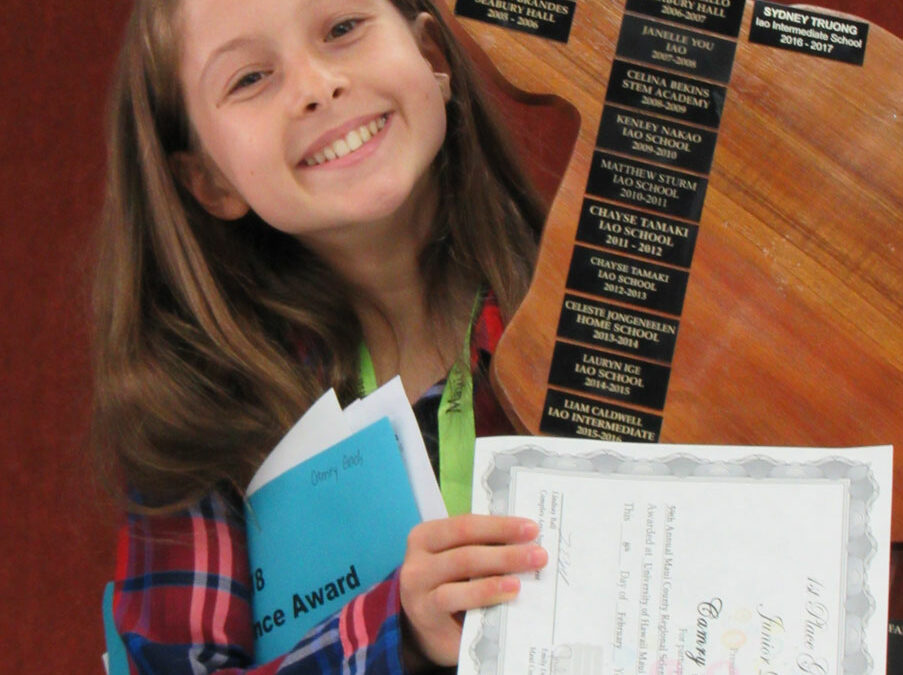
May 2, 2018 | Education, Innovation
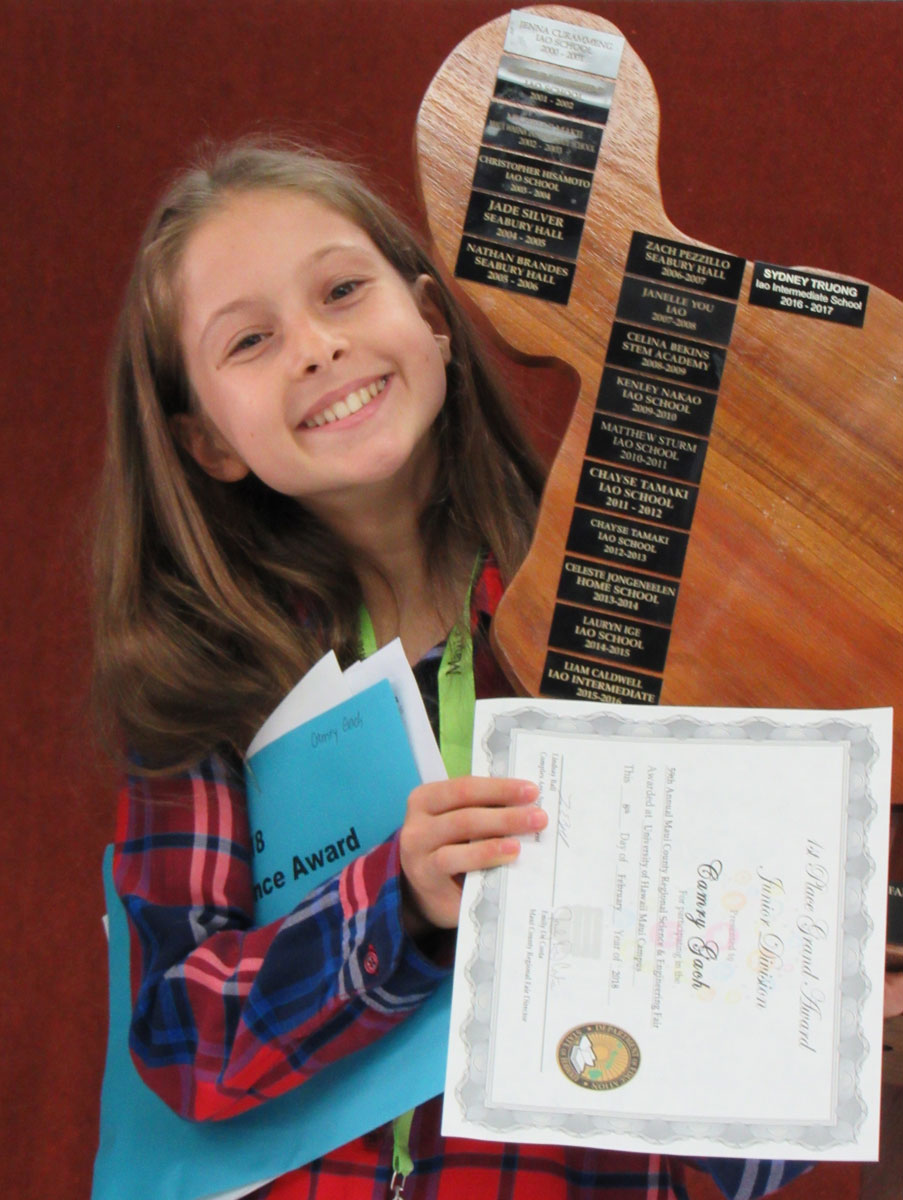
Camry Gach, Seabury Hall 8th grader, is the winner of this year’s 59th Annual Maui County Regional Science & Engineering Fair’s First Place Grand Award – Junior Division; the 2018 Ricoh Sustainable Development Award; the 2018 Broadcom MASTERS; The Best in Energy – Physical Junior Division Award; the Alexander and Baldwin Merit Award – Junior Division; and the Naval Science Award.
“My science fair project, The Effect of Different Lenses and Lights on Solar Power, tested convex, concave, and flat glass at three different heights: 20, 30, and 50 centimeters away from a photovoltaic cell (mini solar panel) to see if they would increase the voltage of the focal point on the cell,” said Gach. “I became interested in this project because I have always been so amazed that energy can be produced from the sun without having to emit a by-product into the air. With such a phenomenal form of sustainable energy, I wanted to contribute to solar panel companies by increasing the voltage that a solar panel produces. I knew that lenses directed light, so I decided to experiment with them to see if that could increase solar voltage. The red light with the convex lens at 30cm from the cell had the highest voltage. The red light mostly had the best results, because it has longer wavelengths than the blue light, which made it travel to the lenses more efficiently.”
Gach’s vision for moving forward with this project is to test a giant convex lens that is bigger than the cell to see if that will increase the output of the whole photovoltaic cell and not just the focal point. “This may increase solar power, because the convex lens will collect light outside the perimeter of the cell and direct that light into the photovoltaic cell,” said Gach, who also would like to continue this experiment by testing with the sun as a light source to represent solar power more realistically. “I feel very excited to continue my project and contribute to solar research.”
I am also interested in testing a Fresnel lens because it uses many lenses and angles to concentrate light.
Camry Gach, Seabury Hall 8th grade
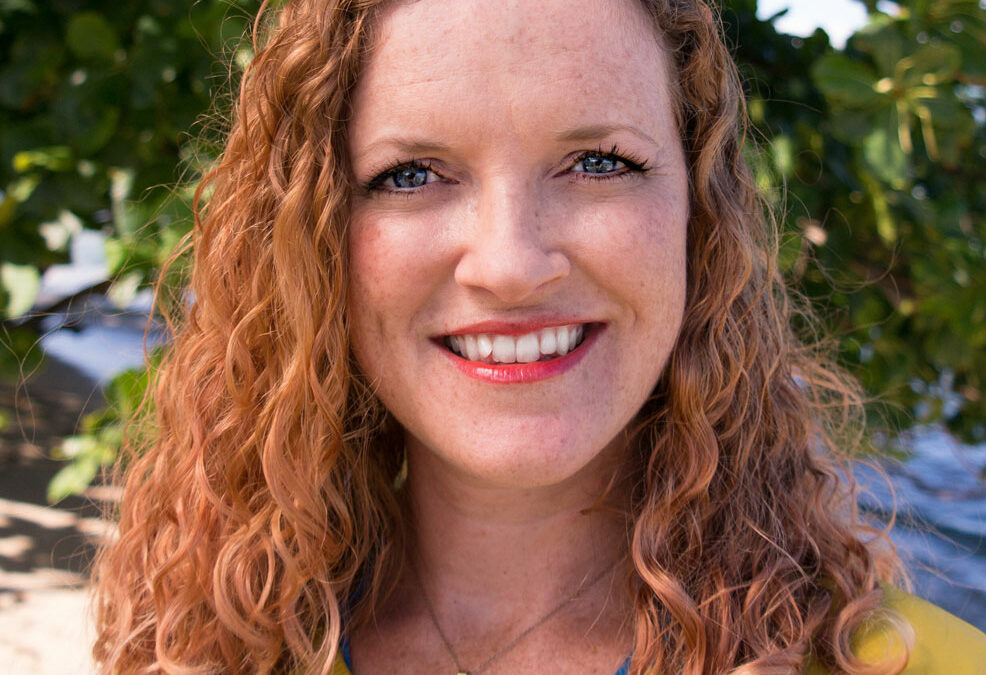
Apr 25, 2018 | Education, Small Business
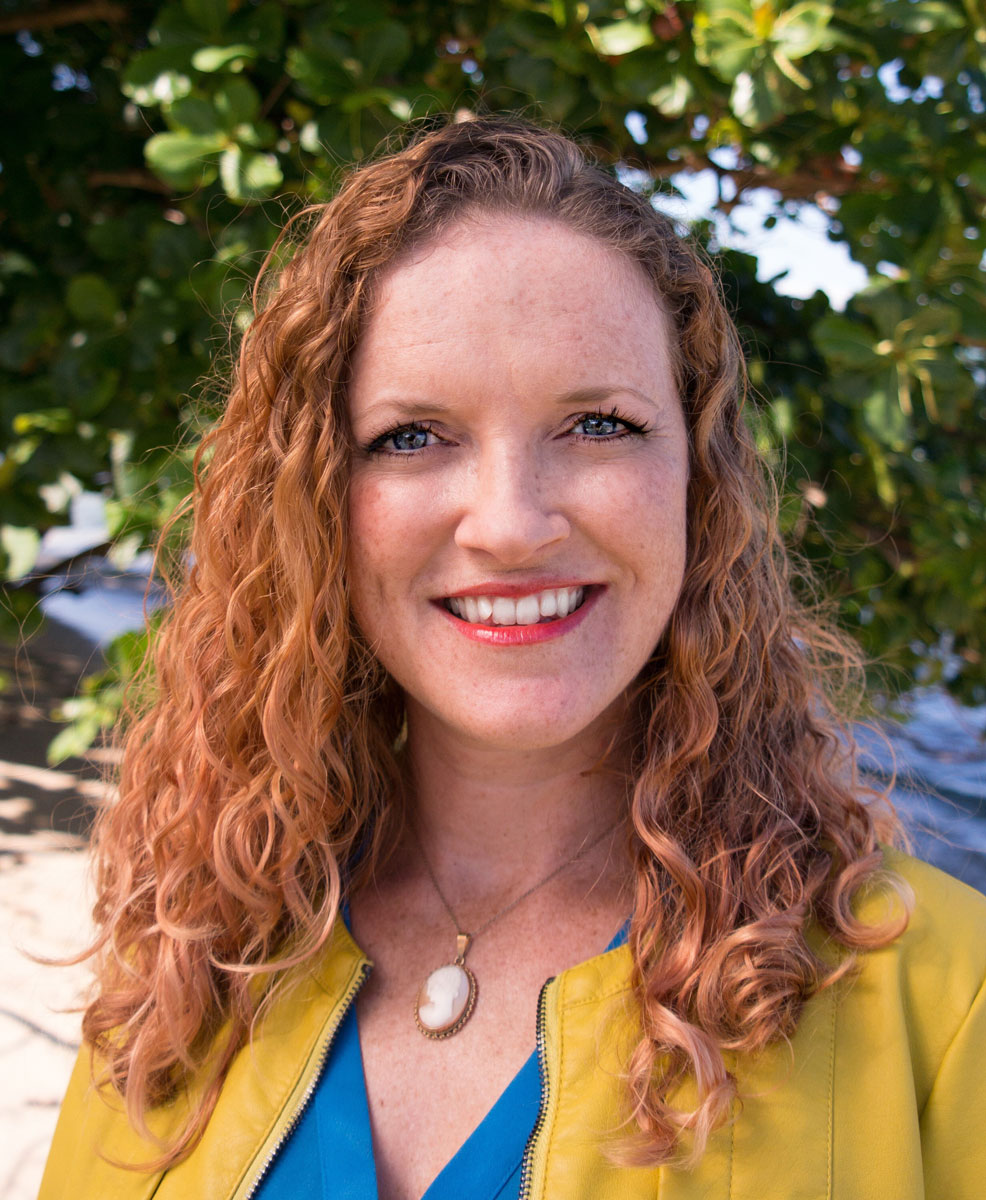
Small businesses will learn pathways to success at the 2nd Annual Hawaii Small Business Conference (HSBC) on May 2-3, 2018 at the Maui Arts & Cultural Center in Kahului. The theme of this year’s event, “Plan, Build, Grow: Mapping A Pathway to Success”, provides resources via a network of experts along with hands-on skills necessary for businesses to accelerate growth.
The HSBC coincides with the U.S. Small Business Administration’s National Small Business Week, celebrating both America’s entrepreneurs and small business owners. Topics include customer service, business growth and scaling, social media management, innovation, tax strategies and more. Additionally, speed-networking with industry leaders will allow opportunity for questions and answers.
Gwen Woltz, co-founder of Wahine Media, is a leading social media strategist and one of the early voices in the social media revolution in Hawaii. Her keynote “Social Media Reality Check—Gone are the Days of Free” will help attendees envision their perfect world on social media and the most effective route to get there. “Being a small business owner from Hawaii myself, my hope is to inspire other business owners to approach social media with confidence and a plan,” Woltz said. “I think one of the biggest misperceptions about small businesses in Hawaii is that we are limited because we are on an island, or that we can’t compete with mainland businesses. I hope to show attendees that Hawaii small businesses are not limited but are empowered to do things a little differently. Hawaii small businesses have a unique advantage that no other small businesses have: a strong sense of place and community, a perfect formula to thrive on social media.”
Woltz will speak on Day 1 followed by a Panel in which she will lead a discussion with three Maui businesses who are leading the way with social media. On Day 2, she will present a workshop, “Maximizing Your Social Media Budget”.
Participants can attend the all-day conference on Wednesday, May 2 or any of the smaller group workshops on Thursday, May 3, or both. Various sponsorship opportunities are available. For information visit www.hawaiismallbusinessconference.com or call (808) 875-2300.
My social media clients are in a variety of industries. From budget to best practices, I help them embrace new ways to connect with their audience.
Gwen Woltz, Wahine Media
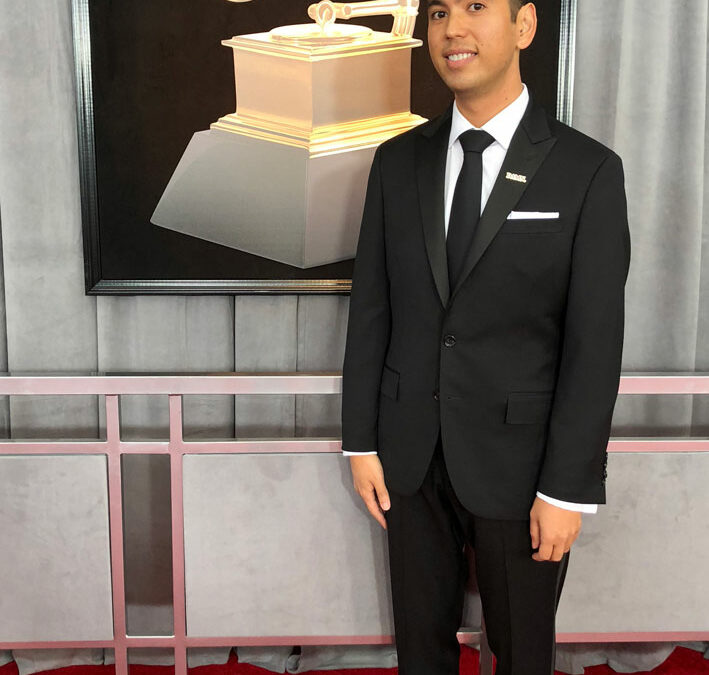
Apr 18, 2018 | Community
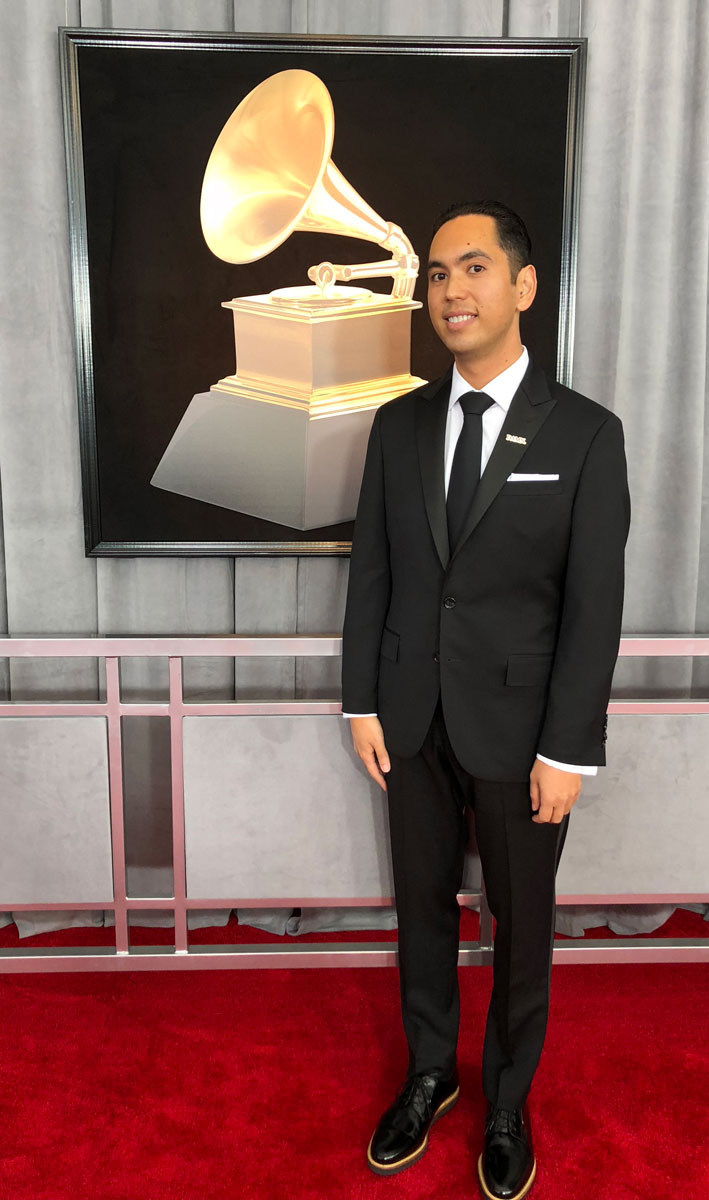
Maui Economic Development Board applauds Maui High School (MHS) 2003 graduate and video producer, Jason Baum, for winning his first Grammy Award. His work on Kendrik Lamar’s music video, Humble, was recently honored at the 60th Grammy Award show in New York City. A graduate of New York University’s undergraduate film program, Baum works across the country and internationally with an array of clients.
“My journey toward working in the film industry is rooted in my time at MHS,” Baum explained. “I was in the second class to participate in the EAST Project, which allowed me to apply the latest technologies for solving community problems. With that program led by Keith Imada, in conjunction with Clint Gima’s video program, I started to make short films with their camcorders and editing software. My teacher’s encouragement toward working independently, as well as in a host of school programs, was formative and a part of the skills that I still use to this day. One of the short films that I created was part of a greater multidisciplinary project that represented MHS at the national EAST Conference. This project went on to win the top prize in the 2002 competition and was the first of many other videos that I took to the national level while still in high school.”
Keith Imada, MHS teacher, said, “Baum was really dedicated to his craft, spending hours and days on end to download, edit, render, and export the videos. I knew he would be successful because of his work ethic, his dedication, and his willingness to explore new technologies and utilize them.” Clint Gima, MHS teacher, added, “Jason was born to be a producer. He was involved with multi-school projects, making videos and documentaries for the school and community, all while keeping up with his grades.”
Baum stays connected to MHS by serving on the MHS STEAM (science, technology, engineering, art, mathematics) Learning Center Advisory Board. While continuing his work in the music industry, his dream is to expand his skills to feature length films, perhaps one in Hawaii.
My parents, Dr. Frank Baum and Dr. Colleen Inouye, were recently presented with the MHS Saber Spirit Award for their continuing annual Baum-Inouye Valedictorian Scholarship Fund.
Jason Baum, 2018 Grammy Award Winner
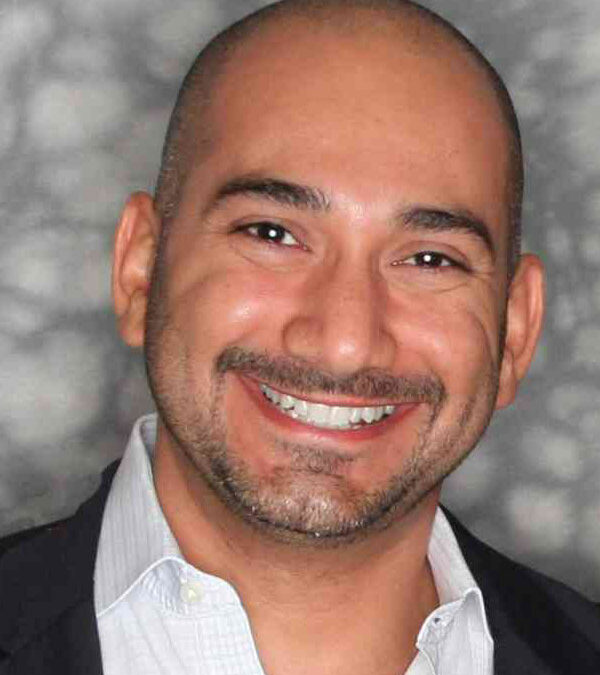
Apr 11, 2018 | Education, Small Business
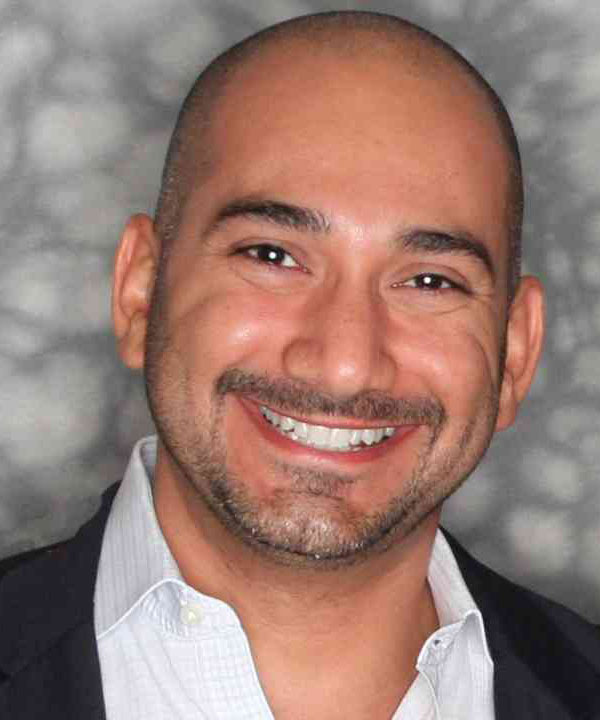
Omar Sultan, co-founder of Sultan Ventures, Founding & Managing Partner of XLR8UH
The 2nd Annual Hawaii Small Business Conference (HSBC) at the Maui Arts & Cultural Center on May 2 & 3, 2018, will provide business owners, entrepreneurs, and employees with an opportunity to expand their expertise in numerous industry-related subjects. Hosted by Maui Economic Development Board (MEDB) and the Mayor’s Office of Economic Development, the conference program Plan, Build, Grow: Mapping a Pathway to Success is an ideal opportunity for anyone interested in learning important strategies for business success.
“You’ll hear from successful national and local business leaders and owners, on customer service, business growth and scaling, social media management, innovative tax strategies and more while networking with the business community,” said Leslie Wilkins, President & CEO of MEDB.
Mayor Alan Arakawa added, “Small businesses dominate Hawaii’s economic landscape, making up over 90 percent of the business community and employing half of our state’s employees. By helping our local businesses navigate pathways for their success, we’re also helping to encourage ingenuity and profitability that ultimately impact our community and economy.”
First-day sessions will involve a combination of renowned specialists, plenary panels, and case studies on specific subjects. Karen McCullough, Generations Speaker, will provide the Opening Keynote and panel discussions on Customer and Employee Relationships.
Omar Sultan, co-founder of Sultan Ventures, Founding & Managing Partner of XLR8UH, will present a talk on Scaling Your Business, and will moderate a panel on Shaping a Game Plan for Growth. “Our firm helps visionary founders build successful, long-lasting businesses by supporting them at every stage of their journey,” said Sultan. Gwen Woltz, co-founder of Wahine Media, will discuss Social Media Reality Check: Gone Are the Days of “Free” and moderate a panel on Social Media Maui Style. “I can help attendees envision their perfect social media world and then map the quickest and most affordable route to get there.”
The second day consists of workshops diving deeper into some of the subjects presented on the first day, including a workshop on Tax Strategies for Small Businesses presented by Robert Kawahara, CPA, Managing Member, Kawahara + Hu, LLC.
During the HSBC we will explain the importance of pivotal resources via a network of experts and investors and the hands-on expertise necessary to accelerate growth.
Omar Sultan: Co-founder, Sultan Ventures; Founding & Managing Partner, XLR8UH
To register online, visit www.HawaiiSmall.Biz or call (808) 875-2300.
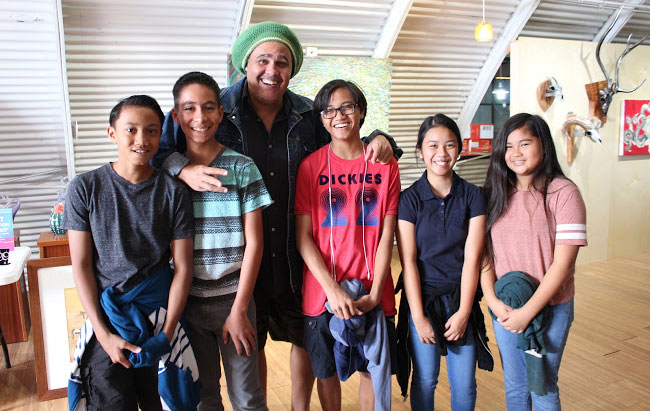
Apr 4, 2018 | Education, Stemworks

Maui Economic Development Board’s Women in Technology (WIT) STEMworks™ AFTERschool program is pleased to announce the 2018 Hawaii STEM (science, technology, engineering, mathematics) Conference on April 10-11, 2018 at the Hawaii Convention Center on Oahu. This two-day regional technology conference serves over 1000 middle and high school students and 300 teachers. “The students are part of our STEMworks™ labs that are in twenty-nine schools across the state of Hawaii,” said Mapu Quitazol, WIT Program Manager. “The Conference provides our STEMworks™ students the opportunity to showcase their service-learning STEM projects, network with other students and industry professionals, compete with other students, attend hands-on sessions, and much more.”
The conference also provides students and teachers the opportunity to receive training in cutting-edge software tools and be exposed to new STEM fields and career opportunities. Past conference breakout sessions include: Photoshop, After Effects, Gaming, Coding, Engineering Design using CAD, Voyaging, GIS/GPS, Mapping UAV’s, Conservation, and Photography.
Recently, Randy Schaffer and Justin Brown, owners of Makai Glass in Haliimaile, hosted a fundraising event for Lokelani Intermediate School students from Kihei, to attend the STEM Conference. “We are happy to support the keiki in such a worthwhile cause,” Schaffer and Brown agreed. “They are our future.” The event featured local musician Marty Dread who also supports the program. “STEMworks™ is focused on engaging middle school students in subjects and projects that help inspire the next generation of professionals,” said Dread. “I strongly support education in the Maui community.”
Karen Wright, Lokelani 8th grade science teacher and STEMworks™ Site Coordinator added, “Our AFTERschool program has grown to over 200 students that attend frequently. WIT supports the classes with technology supplies, trainings, field trips, and hiring staff to teach the daily lessons. During the STEM Conference, our students will explore future careers by meeting and learning from local industry and university leaders.”
Kimara Alger, Lokelani 8th grader, says STEMworks™ has expanded her knowledge about career opportunities. “It was so exciting to see women involved in glassblowing at Makai,” she said. “WIT has opened so many possibilities for girls!”
It was such an exciting fundraiser! Mahalo to Makai Glass, Marty Dread and everyone who supported our goal of taking 12-15 students to the Hawaii STEM Conference. We did it! We’re going!
Kimara Alger, Lokelani Intermediate School 8th Grade


















